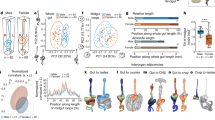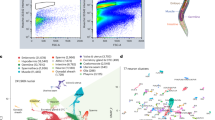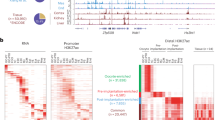Abstract
LIVING eggs of the zebra fish, Brachydanio rerio (Hamilton, formerly Buchanan), have been studied to detect variations in the rates of cleavage between eggs in the same batch and between different batches. In this tropical fresh-water fish a symmetric pattern of cleavage favours the prompt recognition of impending cytoplasmic furrows up to the 32-cell stage1, beyond which the stratification of blastomeres and their diminution in size make sufficiently precise observations impossible. Cell division is synchronous in all blastomeres from the 2-to the 32-cell stage.
This is a preview of subscription content, access via your institution
Access options
Subscribe to this journal
Receive 51 print issues and online access
$199.00 per year
only $3.90 per issue
Buy this article
- Purchase on Springer Link
- Instant access to full article PDF
Prices may be subject to local taxes which are calculated during checkout
Similar content being viewed by others
References
Roosen-Runge, E. C., Biol. Bull. Woods Hole, 75, 119 (1938).
Swann, M. M., Cancer Res., 17, 727 (1957); 18, 1118 (1958).
Amberson, W. R., Biol. Bull. Woods Hole, 55, 79 (1928).
Clowes, G. H. A., and Krahl, M. E., J. Gen. Physiol., 23, 401 (1940).
Jones, R. W., and Huffman, M. N., Trans. Amer. Micro. Soc., 76, 177 (1957).
Author information
Authors and Affiliations
Rights and permissions
About this article
Cite this article
MARRABLE, A. Variations in Early Cleavage of the Zebra Fish. Nature 184, 1160–1161 (1959). https://doi.org/10.1038/1841160a0
Issue Date:
DOI: https://doi.org/10.1038/1841160a0
Comments
By submitting a comment you agree to abide by our Terms and Community Guidelines. If you find something abusive or that does not comply with our terms or guidelines please flag it as inappropriate.



